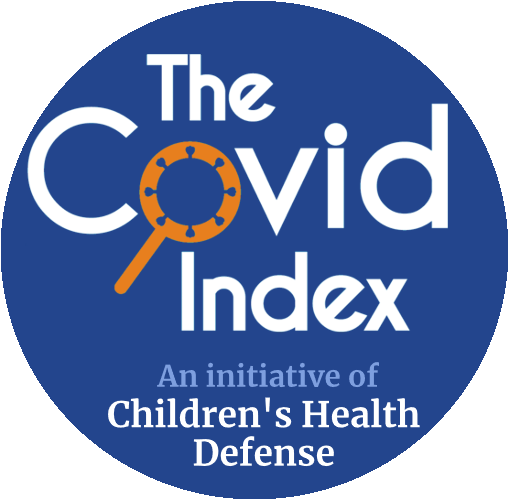David Speicher, Byram Bridle, Jay Bhattacharya, Kevin Bardosh, and Natasha Gonek also contributed to this report.
"The objective of this report is to analyze publicly available data to unravel the intricacies of Alberta’s decision-making framework during the pandemic. By examining who made key decisions, what information those decisions were based upon, and how information was disseminated and utilized, the [Pandemic Data Review] Task Force aims to provide a clearer understanding of Alberta’s response strategies. This analysis is critical not only for evaluating past actions but also for enhancing future preparedness for public health emergencies... By scrutinizing the sources and reliability of the data used, we can assess the extent to which evidence-based decision making was employed and identify gaps or limitations in the information landscape."
Contents include:
- Chapter 1. Governance and Flow of Information
- Chapter 2. Regulatory Bodies
- Chapter 3. Modeling
- Chapter 4. Non-Pharmaceutical Interventions: Closures & Restrictions
- Chapter 5. Masking
- Chapter 6. Testing
- Chapter 7. Infection Acquired Immunity
- Chapter 8. Vaccines
- Chapter 9. Therapeutics
"Chapter 1. Governance and Flow of Information
- ... The Task Force identified biases in the process, source, and weight of evidence used in decision-making.
- Alberta did not utilize its existing pandemic response plan and lacked transparency in decision-making...
Chapter 2. Regulatory Bodies
... The Task Force found several shortcomings and failures in regulatory governance during the pandemic, including over-centralization, lack of transparency, limited consideration of alternative perspectives, and potential regulatory capture...
Chapter 4. Non-Pharmaceutical Interventions: Closures & Restrictions
The Task Force conducted a thorough assessment of the impact of non-pharmaceutical interventions (NPIs), like closures and social restrictions, on COVID-19 transmission. We observed that while these measures had a limited effect on reducing infection growth, they also incurred significant social and economic costs...
Despite repeated statements of the existence of trade-offs by the former CMOH [Chief Medical Officer of Health], both Alberta and other provinces yielded significant gaps in their research when implementing stringent public health measures, including only minimal consideration of any widereaching negative impacts...
- Five-year historical highs in deaths from substance use; according to the Alberta substance use surveillance system, acute substance deaths have, on average, doubled between March 2020 and June 2022 vs. a pre-pandemic period January 2016 to December 2019; ...
Chapter 5. Masking
... This chapter highlights the weak evidence base concerning the effectiveness of continuous masking in preventing respiratory illnesses, including COVID-19... Despite the limited evidence and potential harms, Alberta implemented mask mandates... The number of COVID-19 infections did not decrease despite these mandates and the widespread vaccination...
Recommendations
3. Children should not participate in continuous or universal masking. Children have very low-risk from COVID-19, and do not readily spread SARS-CoV-2. This dispels the myth that children posed a transmission risk to adults.
4. There is no benefit for masking asymptomatic individuals...
Chapter 6. Testing
... Reporting COVID-19 cases as all those people who were PCR+ created a (possibly unreliable) 'casedemic'...
Without being linked to a set of standardized clinical criteria, we recommend against the use of PCR tests as the sole criteria for a case definition...
Chapter 8. Vaccines
... The Task Force found that the risk of severe COVID-19 infection or death is primarily associated with age, with the elderly being most at risk. Children and teenagers have a very low risk of serious illness from COVID-19. COVID-19 vaccines were not designed to halt transmission...
In terms of safety, the Task Force identified reports of deaths and injuries attributed to the vaccines, as well as a known risk of myocarditis, particularly in young males. The long-term safety of the vaccines is undetermined due to their rapid deployment and limited follow-up...
Conclusions and Recommendations
1. Immediately halt the use of all COVID-19 vaccines...
2. End use of the COVID-19 vaccines for healthy children and teenagers as other jurisdictions have done. See Denmark, Sweden, Norway, Finland, and the UK...
4. Establish a website and/or call-in center for the vaccine injured in Alberta...
Chapter 9. Therapeutics
... This chapter highlights the restrictive approach taken by federal and provincial health authorities toward certain treatments, such as repurposed drugs and supplements, despite their potential benefits. The chapter specifically discusses the drugs ivermectin, hydroxychloroquine, fluvoxamine, and colchicine, as well as monoclonal antibodies and vitamin D3...
- Studies show promising results for ivermectin in terms of viral clearance and reduced hospitalization and death rates...
- A study showed a correlation between low vitamin D3 levels and poor COVID-19 outcomes, but the Alberta SAG [Scientific Advisory Group] recommended against using vitamin D3 for treatment.
- Zinc is an essential mineral for the immune system and inhibits coronavirus RNAdependent RNA polymerase activity.
- Remdesivir is the only antiviral included in the COVID-19 Adult Admission Order Set for hospitalized patients in Alberta."
Open Government Licence - Alberta
https://open.alberta.ca/licence
You are free to: Copy, modify, publish, translate, adapt, distribute or otherwise use the Information in any medium, mode or format for any lawful purpose.
